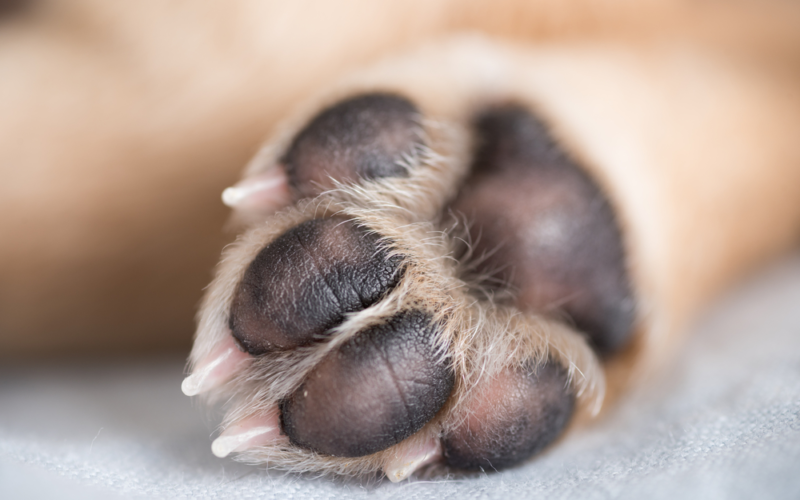Ellen Britt for CNT #wooftips
When it comes to caring for your dog, chances are that you may not think much about his paw pads. Most owners keep their dog’s nails trimmed but never go beyond that.
First of all, just what are paw pads?
These are the fleshy pads on the bottoms of your dog’s feet, consisting of fatty tissue covered by a layer of pigmented skin, usually either black or pink. These pads work like shock absorbers when your dog walks, runs and jumps. They also help with your dog’s balance and help him get traction on surfaces.
Take A Look
If you examine your dog’s paw pads, you will notice they are likely either smooth or calloused and rough. This is usually a function of the type of surface to which your dog is most often exposed. If he is a mostly outdoor dog, or one that does a lot of hiking or running with you, his pads are likely to be calloused. If he spends most of his time indoors then he may very well have smoother pads.
You should make it a point to examine your dog’s paw pads on a regular basis, looking for crack, swelling or discoloration and to see if your dog shows any sign of pain as you are touching his paw pads. At the same time, you should also spread his toes apart and look for any matted hair, burrs or foxtails that may have become embedded.
Summer Paws VS Winter Paws
Different seasons can do damage to your dog’s paw pads. The summer brings hot pavement which can cause burns. Be careful not to let your dog walk on hot asphalt. If you cannot comfortably hold your palm on the surface of asphalt for a full seven seconds, then it’s too hot for your dog.
Winter brings snow and ice and also salt and ice melting chemicals people put down on walkways. Make sure you rinse off your dog’s paws if he has walked through any of this, or purchase winter booties for trips outside.
Dog Balm
You can also purchase waxes or balms made especially for dogs’ paws. Be sure not to use human cosmetic lotions or creams on your dog as they can contain ingredients which while safe for humans, could be toxic to canines.
By Ellen Britt
Dr. Ellen Britt has loved dogs since she was a child. She is particularly fond of the Northern breeds, especially Alaskan Malamutes. Ellen worked as a PA in Emergency and Occupational Medicine for two decades and holds a doctorate (Ed.D.) in biology.

In Other NEWS


































[…] https://citynewsandtalk.com/how-to-care-for-your-dogs-paw-pads/ Give Feedback on Facebook Comments Below paw […]